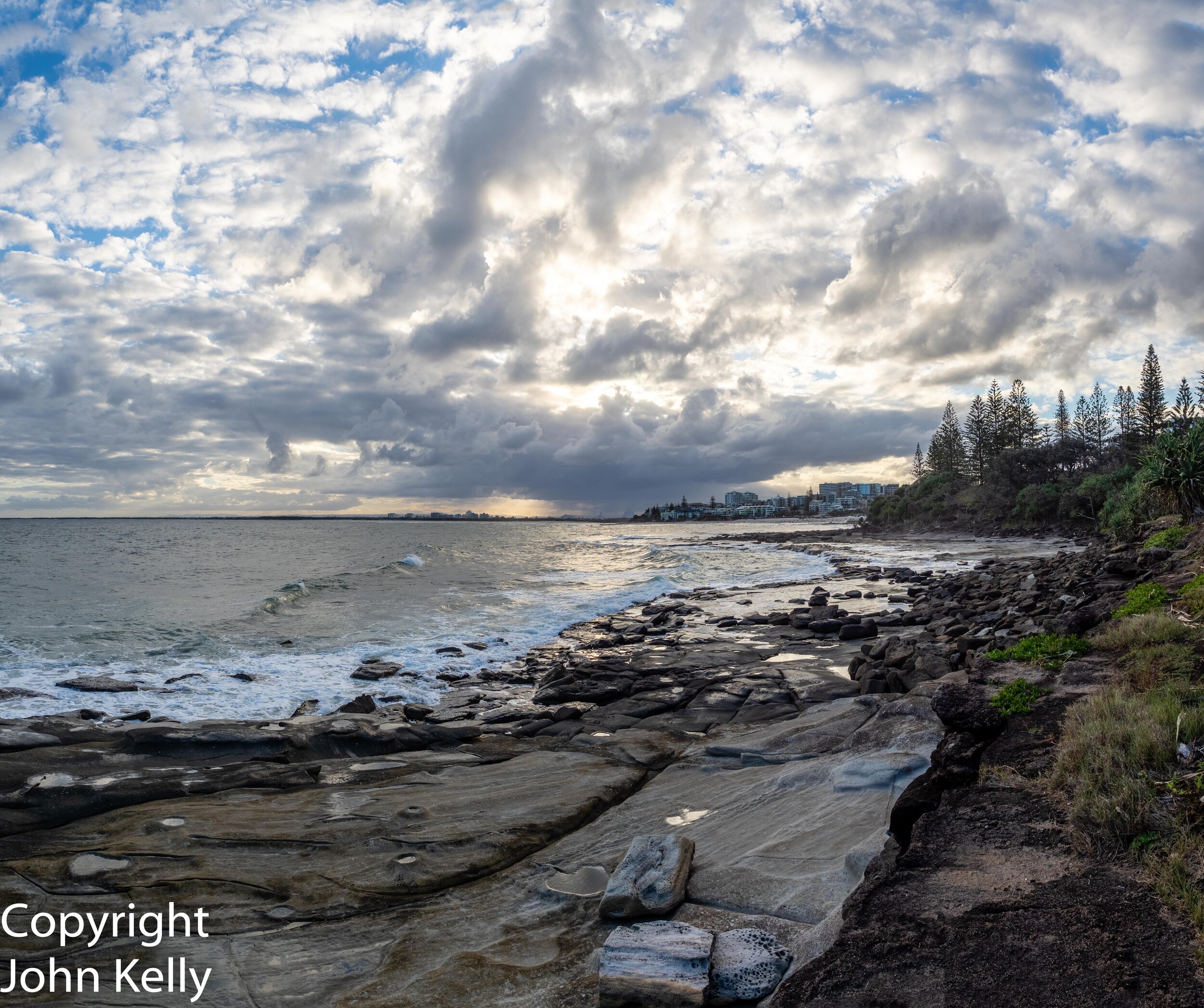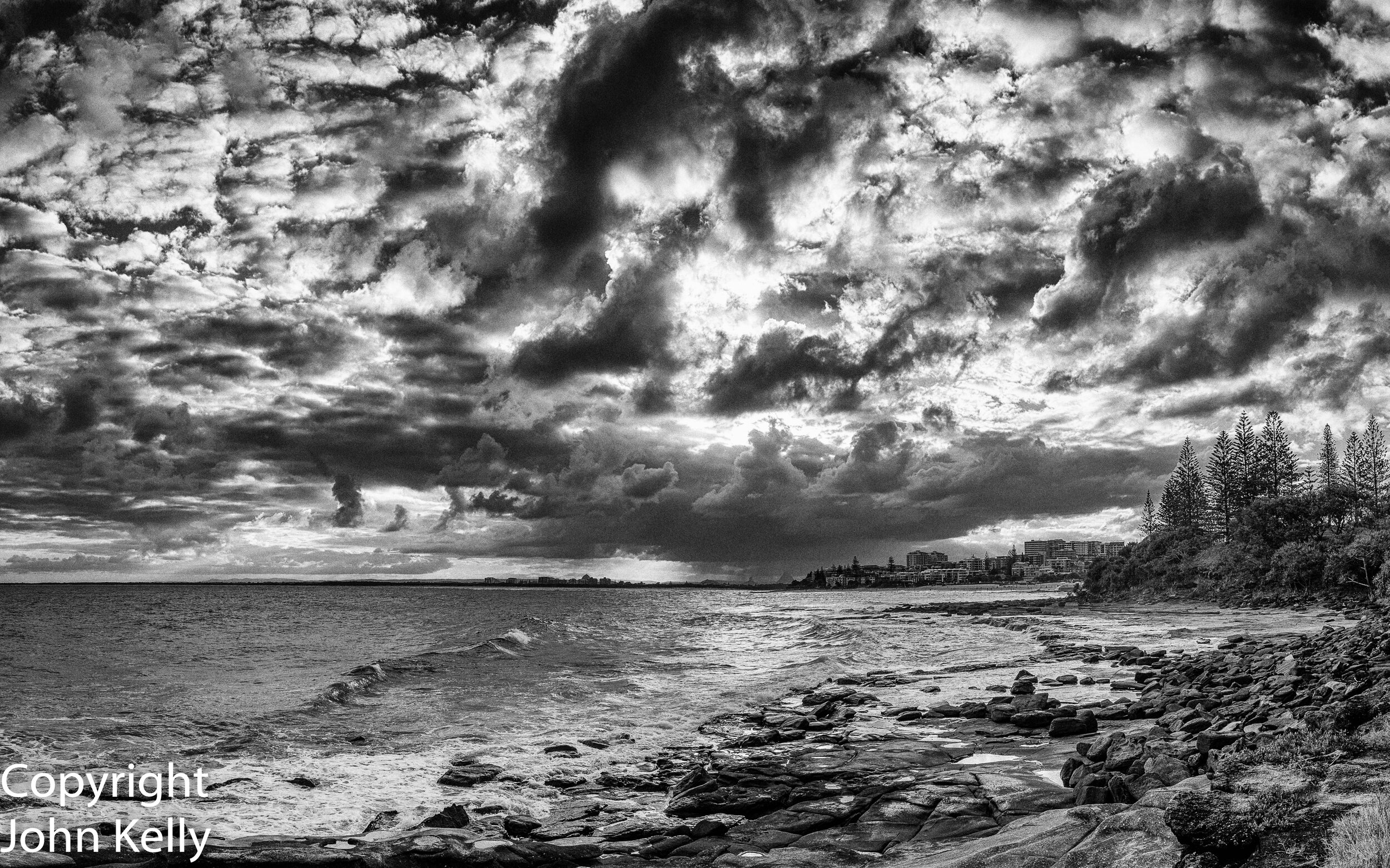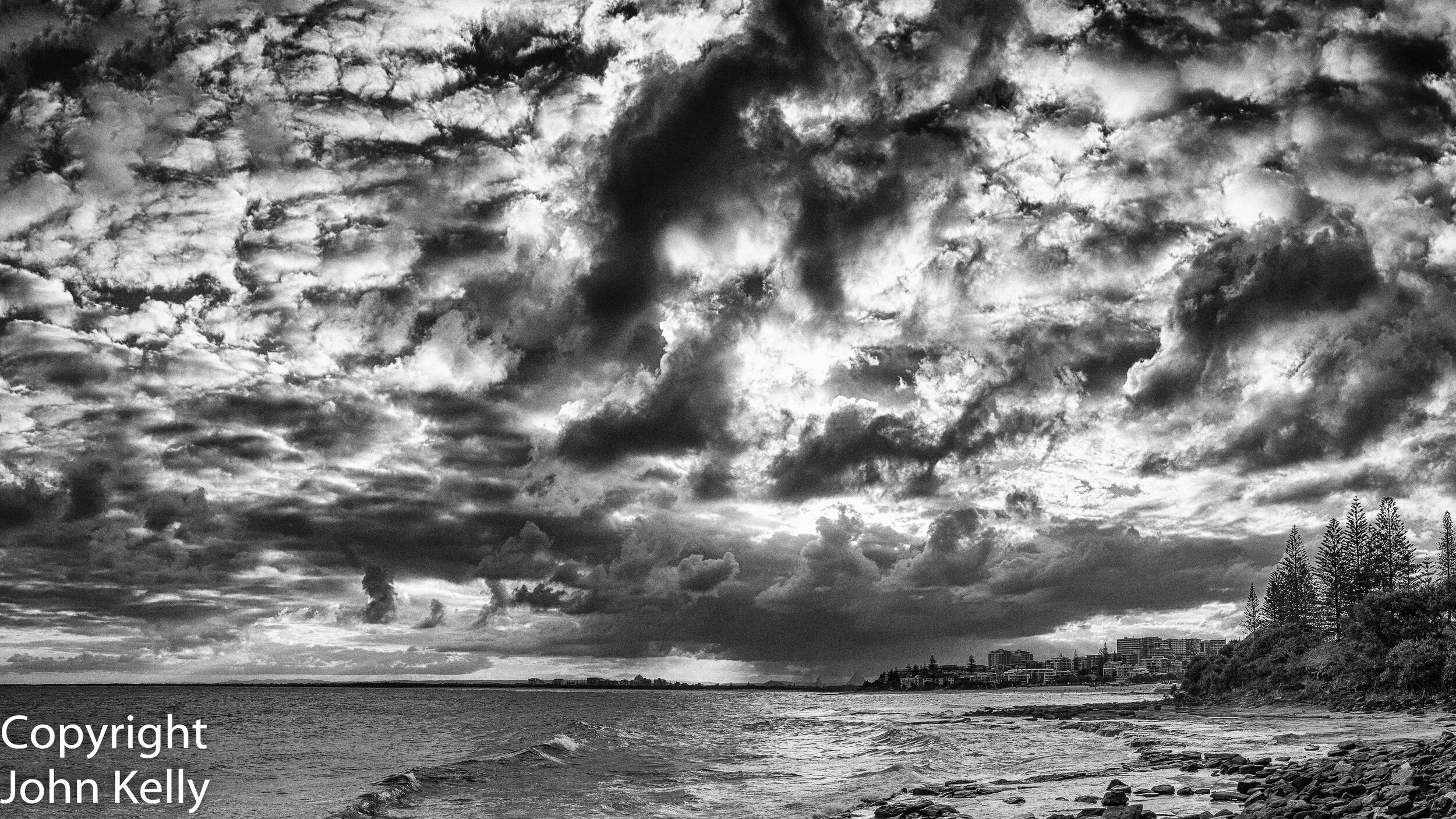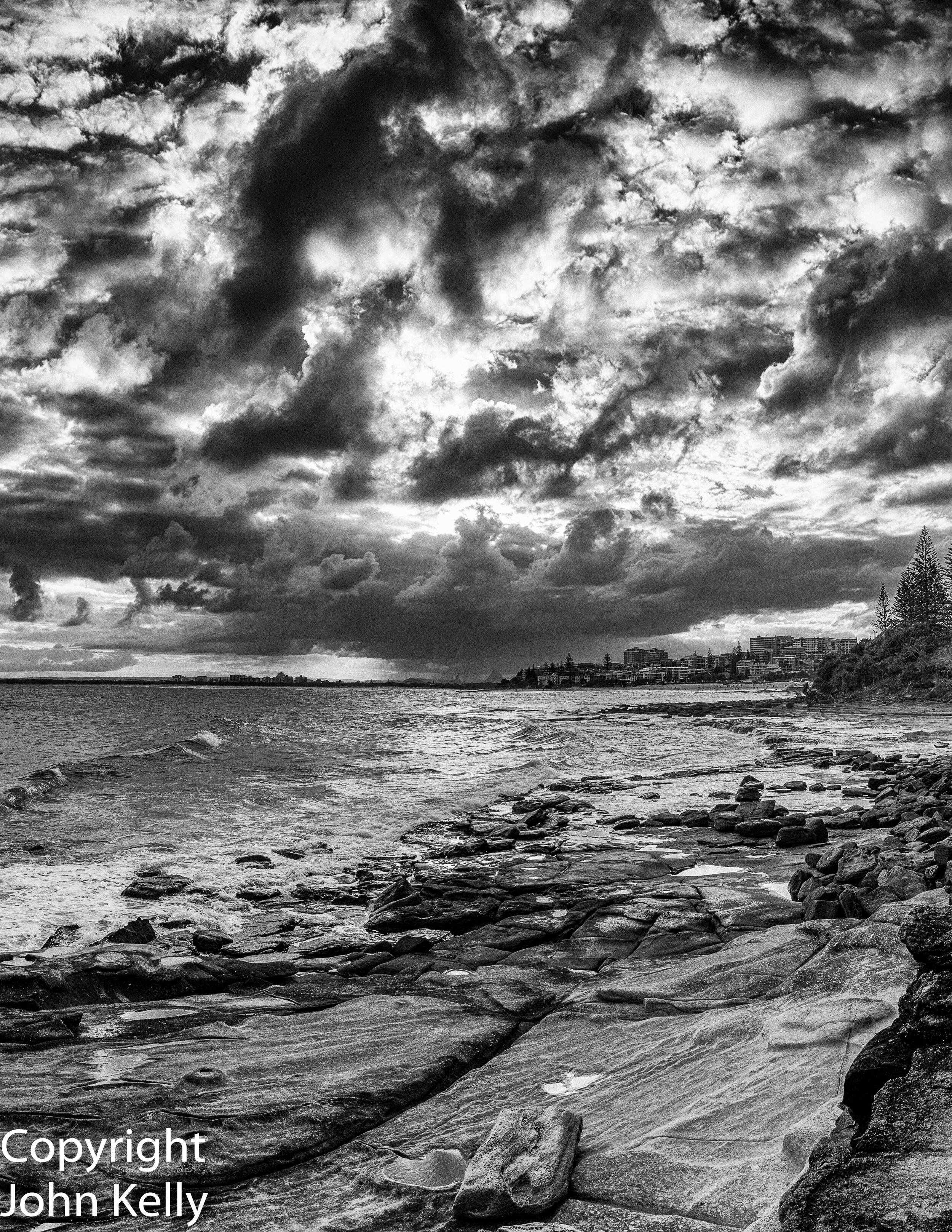Over the Christmas holidays I ran into QCG member John Kelly at Shelly Beach, Caloundra.
John said he had been out shooting some landscapes and I lamented to him that I took terrible landscapes and that I admired John’s work. John’s beautiful ‘Reflections on Louise’ and ‘Diamond Beach’ have both done extremely well at club level and have also been awarded Highly Commendeds at the 2019 Mono Awards held by Australian Photography Magazine.
Reflections on Louise
Following our chance meeting, John very kindly sent me through this summary of his landscape workflow so that I could get a feel for his approach. It was so interesting that I asked his permission to share his insights on the creation of the following image.
As John says, “My eye for composition is greatly assisted by a camera that shows exactly how the image will look when you use the appropriate art filter.”
John shoots with an Olympus OMD EM1 Mark 2, which comes with built-in filters. The effect of the filter can be seen through the electronic viewfinder, so what you see in the field is what you get. The filter John used in this instance is called Dramatic Tone II.
A précis of John’s workflow for this particular image is as follows.
Initial ‘let’s see what we’ve got’ shot looked like this.
John then tried (in camera) art filter (Dramatic Tone II) to visualise. “OK,” he thought. “Might work....”
John then takes bracketed portrait panoramic images, combines and processes to achieve the desired outcome. 12 frames, portrait orientation, -1,0,+1 bracketing, HDR Pano in LR, no pre-processing of frames.
Off to Silver Efex, stock preset plus stock film type, no local adjustments. Minor straighten, foreground custom brush stroke, global Texture, Vignette & Sharpen adjustments on return to LR.
Crop to suit – three options above. Fiddle with variations to process with local adjustments to correct any over/underdone areas after judging feedback perhaps?
Scapes and Open are our first competitions for 2020, with entries due February 6. Happy shooting everyone!








